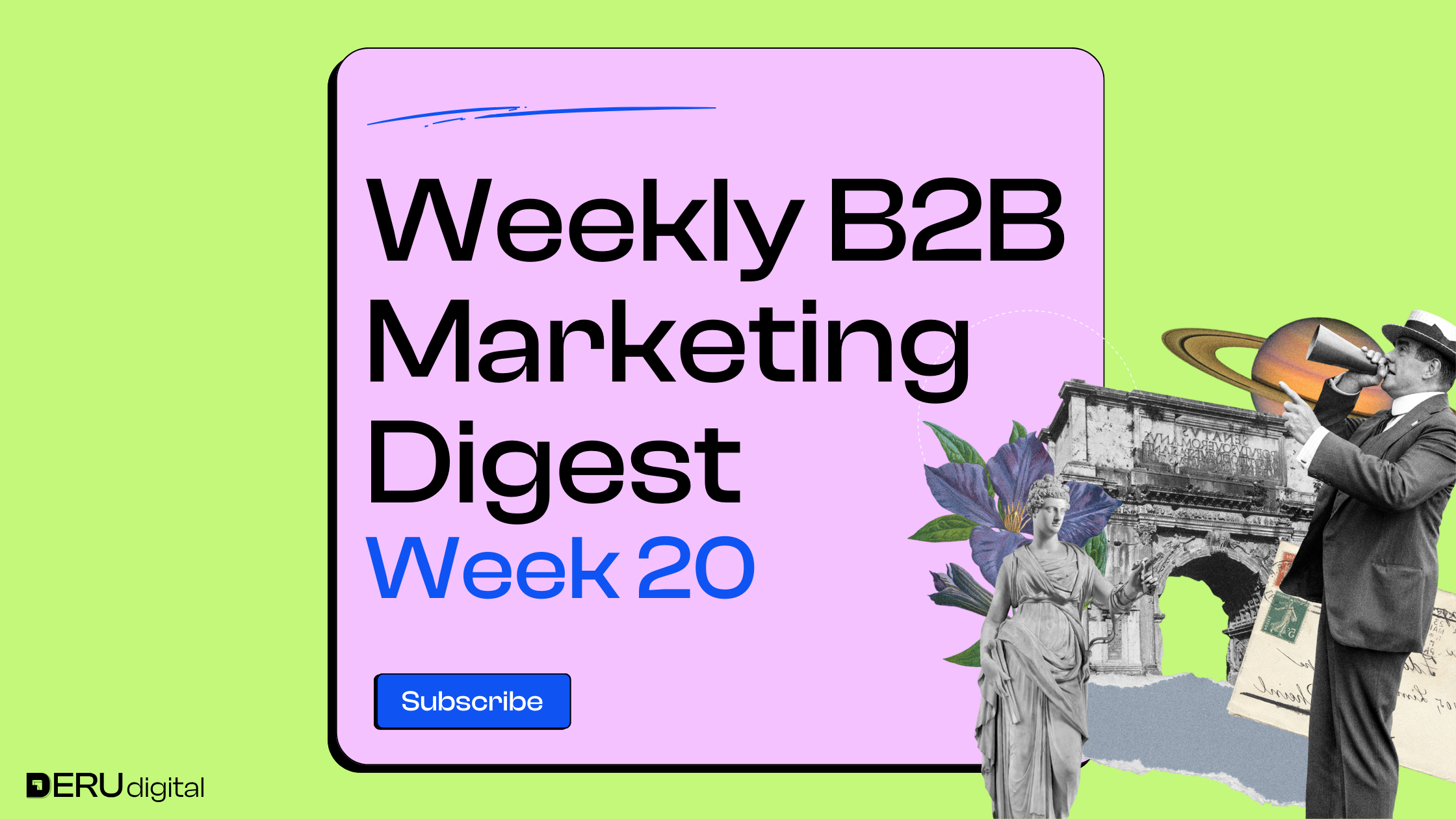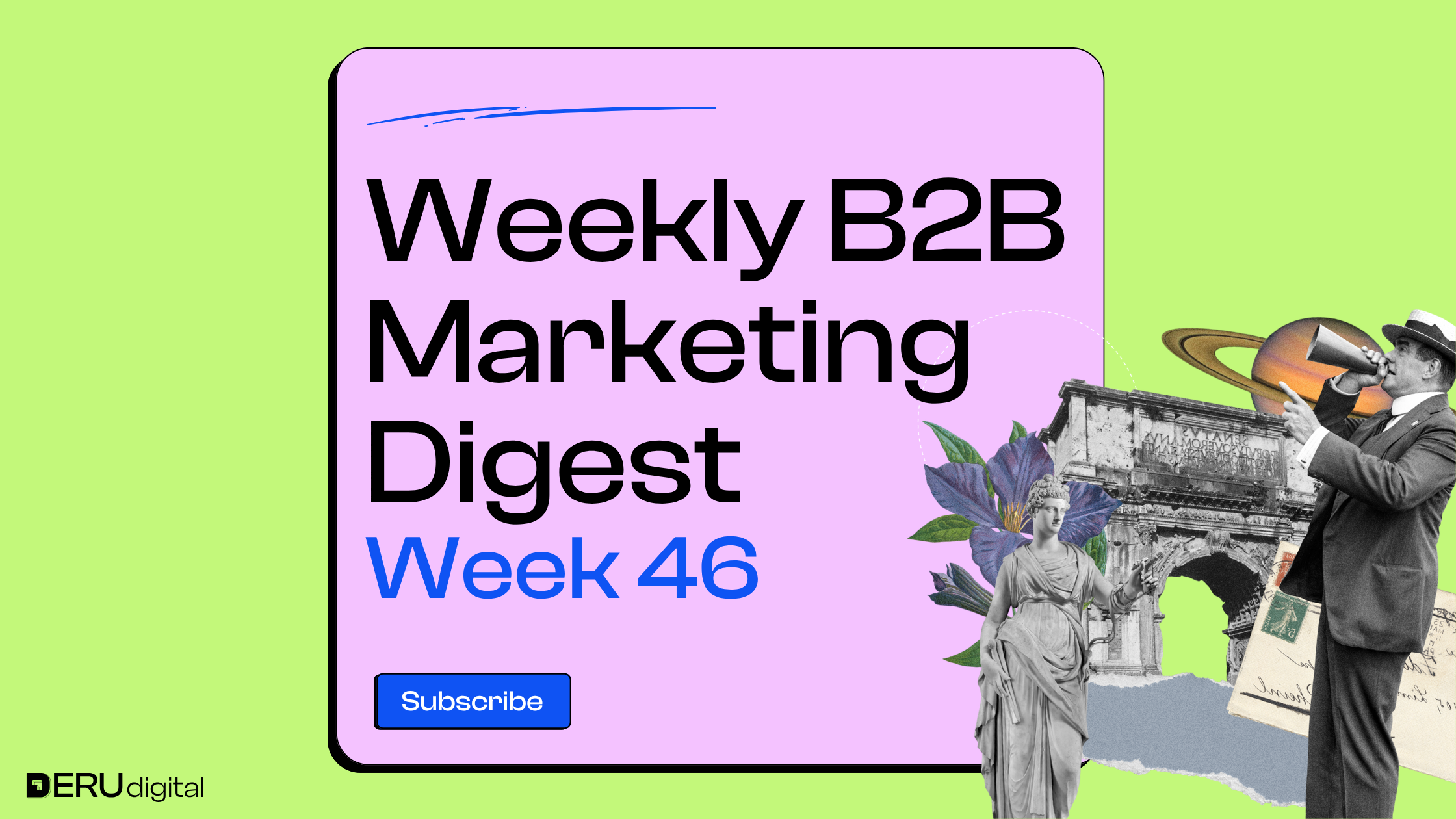INSIGHTS FROM EXPERTS ON LINKEDIN
Charlie de Thibault shows how long buying cycles break common measurement models like MMM and incrementality tests. In his test, revenue impact spread over 60 days went undetected, even though the lift was real. He argues that qualitative signals like surveys and sales notes can be more reliable than complex models when the path to purchase is long and nonlinear.

Ognjen Bošković outlines how Paddle and Clay grow by making everyone, from employees to partners, part of the marketing engine. They treat every update as a launch and prioritize real-world presence, attending dozens of events a year. These companies stay top-of-mind by showing up constantly and creating momentum through consistent, high-effort execution.
Kacie Jenkins 🎁 shares how burnout is driving many CMOs to go fractional or leave full-time roles altogether. She points to unrealistic pipeline goals, outdated attribution models, and the pressure to simplify complex buyer journeys as key factors. Marketers know what works, but they’re forced into frameworks that ignore how buying really happens today.
Alon Even shares that after years in demand gen and three CMO roles, the most common growth blocker he sees is weak positioning. He explains that when buyers say “we already use X,” it’s rarely a sales objection—it’s a failure to clearly differentiate. Strong positioning starts with a customer-informed narrative that explains why your product matters, and without it, demand gen can only go so far.
Rémi Kerhoas reacts to a leaked internal Google email that confirms many advertisers’ frustration with Pmax. He warns that Pmax is being pushed too aggressively, despite not being the right fit for everyone, especially beyond eCommerce. Marketers should feel empowered to use what works best for them, even if it means ignoring Google’s preferred products.

Benoit Legendre alerts advertisers to a global issue affecting Google Ads campaigns using the “Bid only for new customers” setting. Many saw their ad spend suddenly drop, and Google has confirmed a technical problem but hasn’t provided a timeline for a fix. The only current workaround is to change the setting to include both new and existing customers.

Megan Bowen argues that many B2B teams over-index on short-term pipeline at the expense of long-term growth. She explains that strong marketing strategies balance brand, demand, and expansion to build trust, align with sales, and retain customers. When growth is flat or unpredictable, it’s often due to this imbalance – not poor execution.
WHAT'S NEW IN THE INDUSTRY
A new report outlines how marketers can secure more funding by thinking like investors and speaking the language of Finance. Backed by decades of research, the framework helps marketers show how their efforts drive revenue, cut costs, and reduce risk—three key financial levers CFOs care about. The takeaway: to grow budgets, marketers must first win over the finance team.

Salesforce announced a suite of governance and security features to help businesses deploy AI agents responsibly across its platform. The update includes data monitoring, automated backups, compliance tools, and behavior testing to ensure AI agents operate within safe and trusted boundaries. As companies rush to adopt AI, Salesforce is positioning itself as a leader in building guardrails into the foundation.
In celebration of Small Business Month, TikTok is offering $1 million in ad credits and launching educational events to help U.S. small businesses grow on the platform. With expert webinars and live Small Biz Fest events in key cities, TikTok aims to empower entrepreneurs while reinforcing its economic impact amid political scrutiny. The initiative provides an easy on-ramp for small brands to tap into TikTok’s vast, engaged audience.
Google is rolling out automatic image optimizations in Performance Max campaigns, including pulling visuals straight from your website. That means your ads might start looking different, without you making a single change. It’s a reminder to double-check settings so your brand stays consistent.

Google just gave advertisers a long-requested feature: device targeting in Performance Max. You can now choose where your ads show – on phones, tablets, computers, or even TVs. It’s a small change that could mean big improvements to performance and ROI.

A new “Ads funded by” label in Google Search reveals the name behind each ad’s payment profile. It’s a move toward more transparency, and one that could impact how people trust certain ads. Brands might need to rethink what name appears on the bill.

When Temu suddenly stopped advertising in April, it created a wave of open ad space across Google and Meta. But instead of helping smaller brands, the extra visibility mostly went to big names like Etsy and Walmart. It’s a clear example of how ad power stays concentrated, even when a giant steps aside.

That’s the scoop for this week! If you found this valuable and any useful insights caught your eye, feel free to share them with your network.
Until next week!




